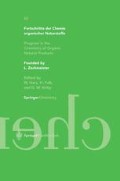Abstract
Why do lurkers lurk and what do they do? A number of studies have examined people’s posting behaviour on mailing lists (Sproull and Kiesler, 1991), bulletin board systems (Preece, 1998) and Usenet newsgroups (Smith, 2000) but studying lurkers is much harder because you don’t know when they are there or why. Although lurkers reportedly make up the majority of members in online groups, little is known about them. Without insight into lurkers and lurking, our understanding of online groups is incomplete. Ignoring, dismissing, or misunderstanding lurking distorts knowledge of life online and may lead to inappropriate design of online environments. E-commerce entrepreneurs are particularly eager to find out why people lurk, in order to understand better how to entice them to participate in commercial interactions.
Access this chapter
Tax calculation will be finalised at checkout
Purchases are for personal use only
Preview
Unable to display preview. Download preview PDF.
References
Google.com (2001) All About Google (http://www.google.com).
Jargon-Dictionary (2001) Lurker (http://info.astrian.nct).
Katz, J. (1998) Luring the Lurkers, In: Slashdot (http://slashdot.org).
Kollock, P. and Smith, M. (1996) Managing the virtual commons: cooperation and conflict in computer communities. In: Herring, S. (ed) Computer-Mediated Communication: Linguistic, Social, and Cross-Cultural Perspectives. John Benjamins, Amsterdam.
L-Soft-International (2001) Record sites (http://www.lsoft.com).
Mason, B. (1999) Issues in virtual ethnography In Ethnographic Studies in Real and Virtual Environments. In: Buckner K (ed) Inhabited Information Spaces and Connected Communities. Edinburgh.
Mason, B. (1999) Issues in virtual ethnography In Ethnographic Studies in Real and Virtual Environments. In: Buckner K (ed) Inhabited Information Spaces and Connected Communities. Edinburgh.
Nonnecke, B. (2000) Lurking in email-based discussion lists. South Bank University, London.
Nonnecke, B. and Preece, J. (2000) Lurker Demographics: Counting the Silent. In: ACM CHI 2000, The Hague.
Parks, R.M. and Floyd, K. (1996) Making friends in cyberspace. Journal of In: Computer-Mediated Communication (http://jcmc.huji.ac).
Preece, J. (1998) Empathie Communities: Balancing emotional and factual communication. In: Interacting with Computers: The interdisciplinary Journal of Human-Computer Interaction 5:32–43.
Preece, J. and Ghozati, K. (1998) Empathy online: A review of 100 online communities. In: Association for Information Systems, 1998 Americas Conference, Baltimore, MD.
Roberts, T.L. (1998) Are newsgroups virtual communities? In: ACM CHI 98, Los Angeles, CA.
Smith, M. (1999) Invisible Crowds in Cyberspace; Measure and Mapping the Social Structure of USENET. In: Communities in Cyberspace: Perspectives on New Forms of Social Organization, Routledge Press, London.
Sproull, L. and Kiesler, S. (1991) Connections: New Ways of Working in the Networked Organization. MIT Press, Cambridge, MA.
TECHWR-L (2001) Information about David Castro’s Digest Reader software (http://www.raycomm.com)/techwhirl/digestreadenhtml.
Whittaker, S., Isaacs, E. and O’Day, V. (1997) Widening the net. In: SIGCHI Bulletin 29:27–30.
Whittaker, S. and Sidner, C. (1996) Email overload: Exploring personal information management of email. In: ACM CHI’96, Vancouver, BC.
Whittaker, S., Terveen, L., Hill, W. and Cherny, L. (1998) The dynamics of mass interaction. In: ACM CSCW 98, Seattle, WA.
Editor information
Editors and Affiliations
Rights and permissions
Copyright information
© 2003 Springer-Verlag London
About this chapter
Cite this chapter
Nonnecke, B., Preece, J. (2003). Silent Participants: Getting to Know Lurkers Better. In: Lueg, C., Fisher, D. (eds) From Usenet to CoWebs. Computer Supported Cooperative Work. Springer, London. https://doi.org/10.1007/978-1-4471-0057-7_6
Download citation
DOI: https://doi.org/10.1007/978-1-4471-0057-7_6
Publisher Name: Springer, London
Print ISBN: 978-1-85233-532-8
Online ISBN: 978-1-4471-0057-7
eBook Packages: Springer Book Archive

